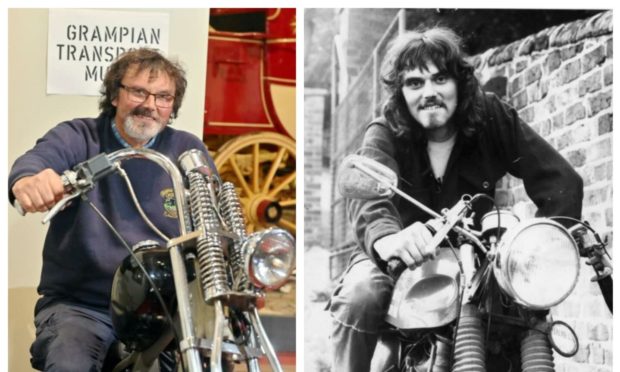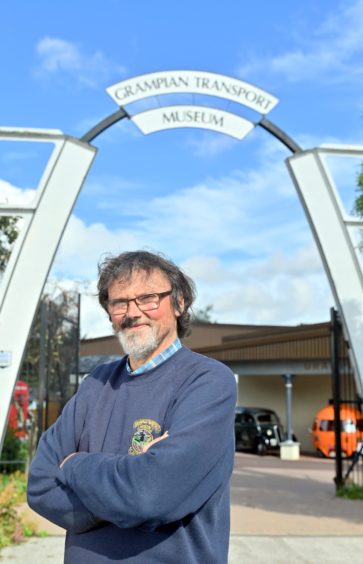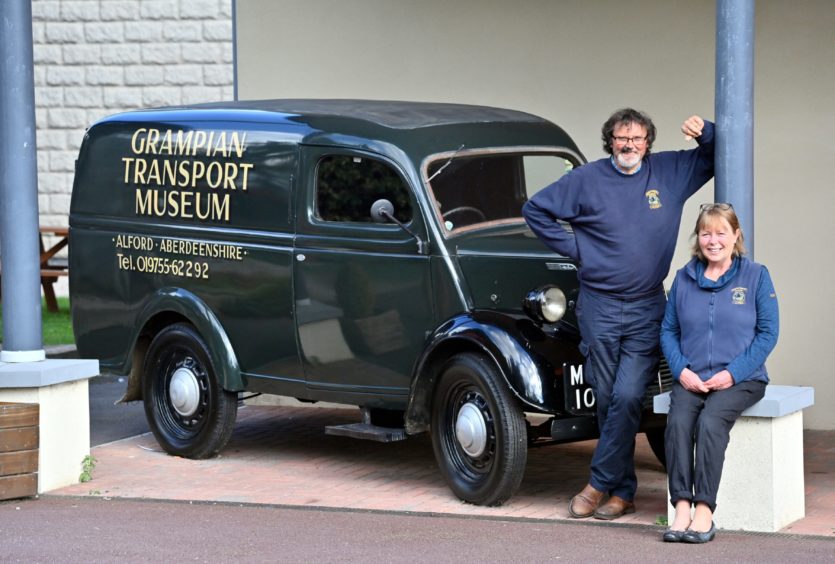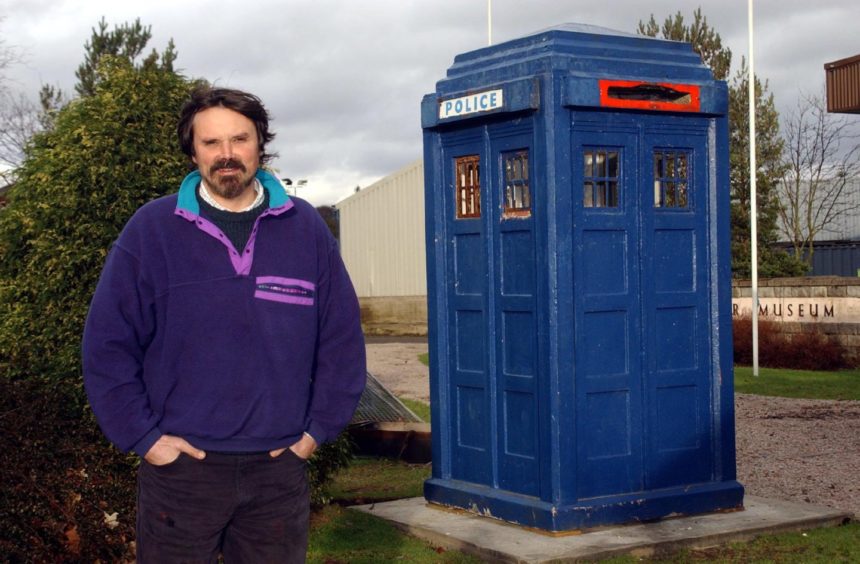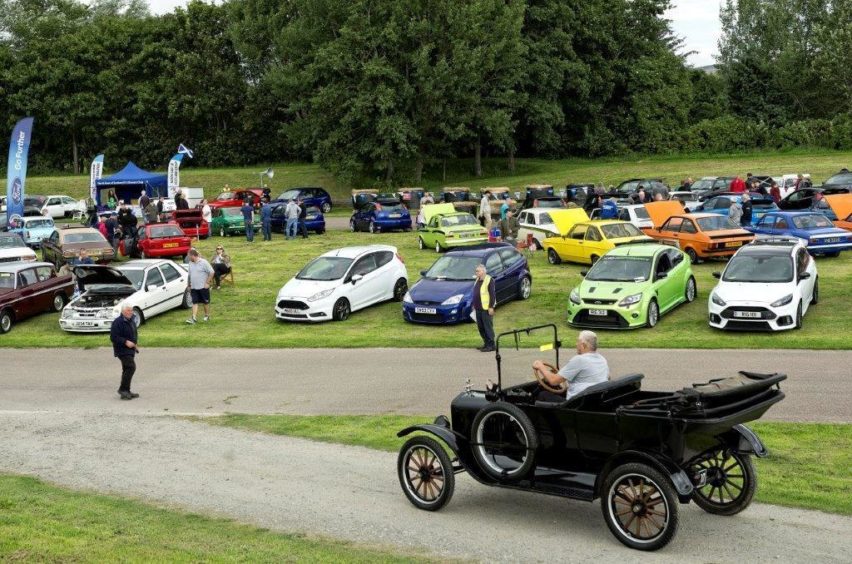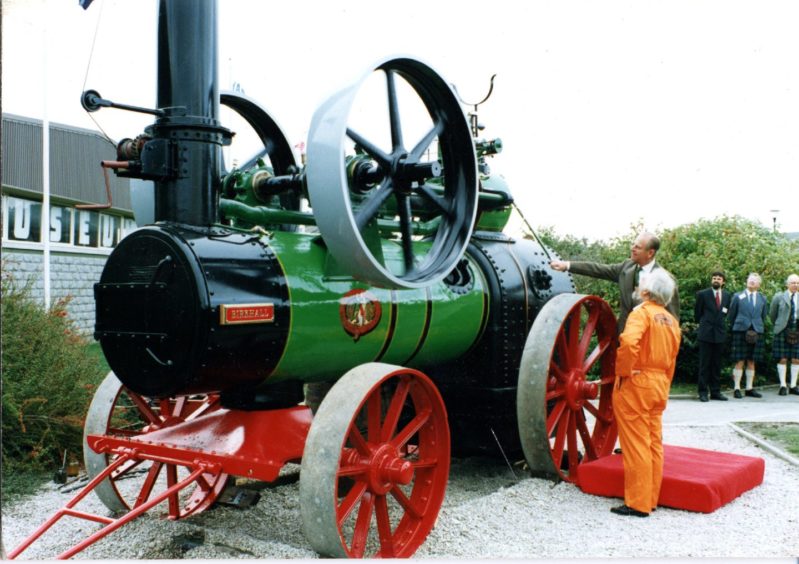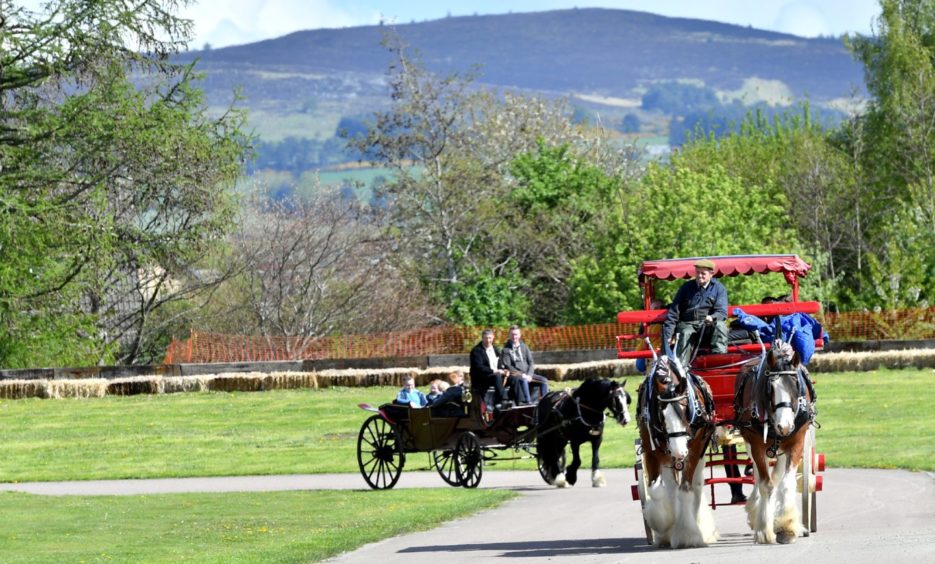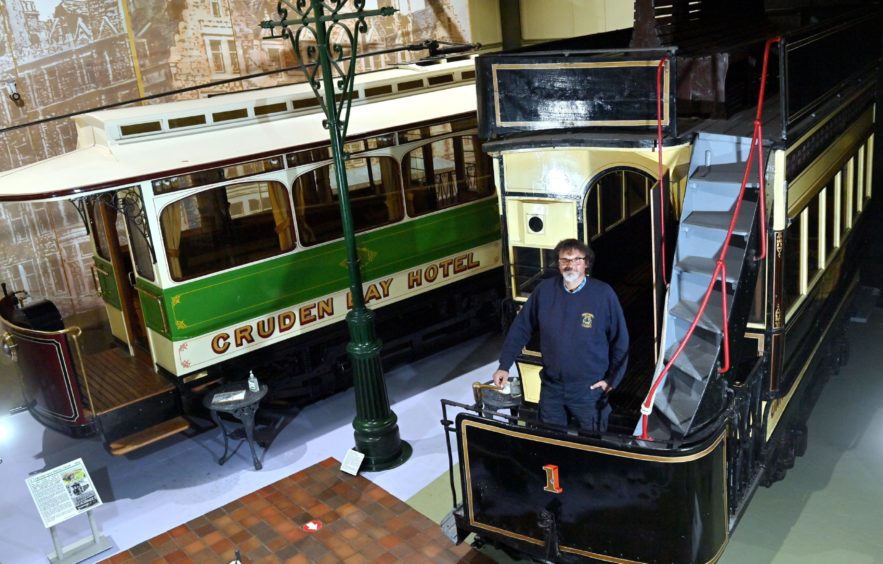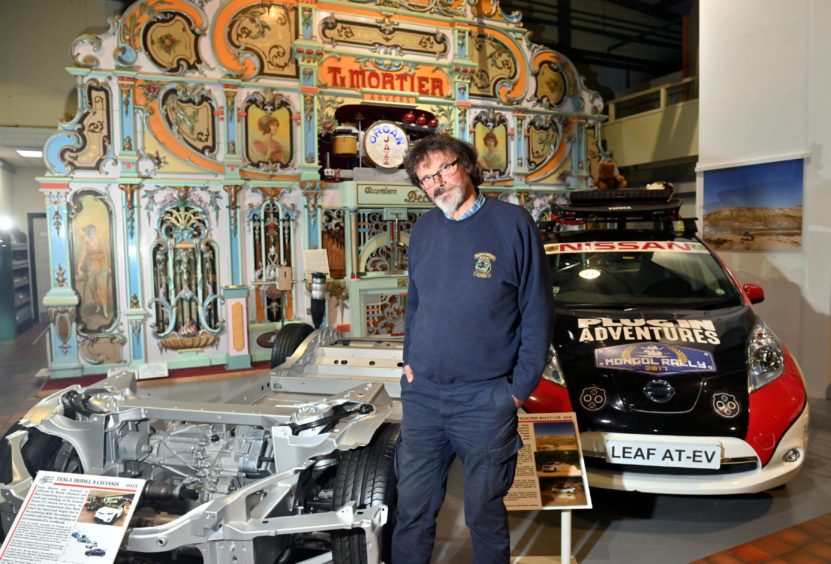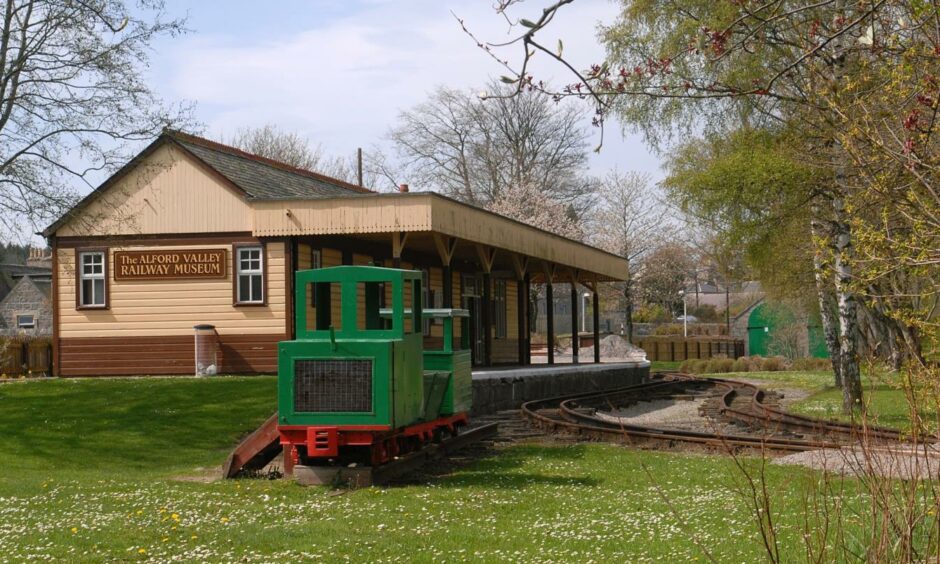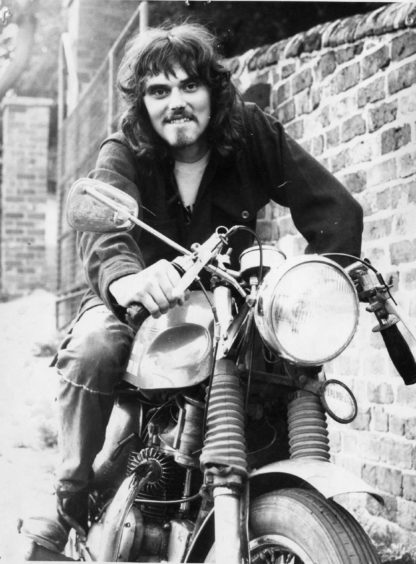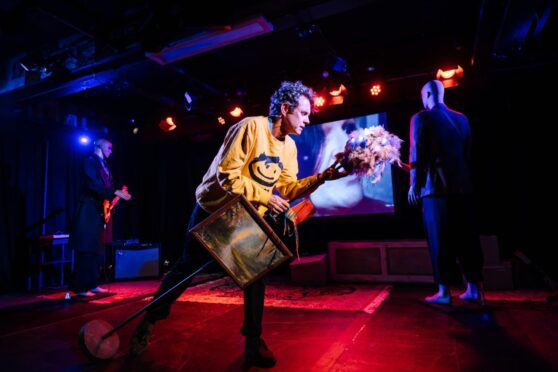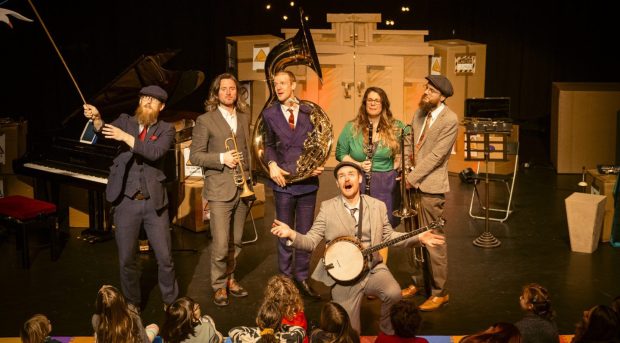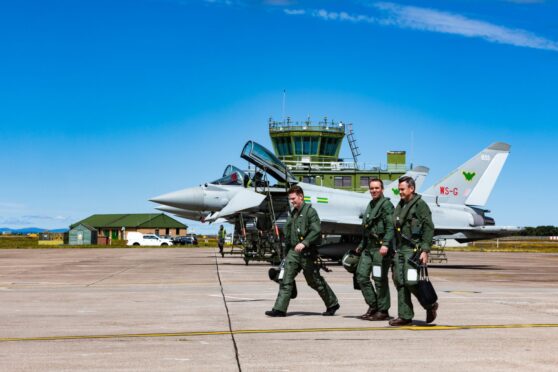The curator of the Grampian Transport Museum is officially retiring after almost 40 years of bringing the history of transportation to life and putting Donside on the tourism map.
Mike Ward, 65, travelled from his home of England to Aberdeenshire in 1983 to take on the top job at the Alford-based visitor attraction, with his first day in the role on April 1 that year – when it opened to the public for the very first time.
In the 38 years since, the world of transportation, and the museum itself, has changed completely.
But Mr Ward, who was awarded an MBE in 2012 for cultural services in Aberdeenshire, said his consistent approach of keeping the attraction and its displays topical and relevant means it still has a bright future ahead of it, even without him behind the wheel.
Trains, planes, automobiles, and a Tardis?
From exhibitions on time travel to coincide with the resurgence of Dr Who, complete with real-life Daleks, to collecting as many vehicles involved in the Great Train Robbery as possible in one place, Mr Ward’s efforts have made the museum a vital part of the Alford, and the wider Aberdeenshire, community.
Mr Ward said: “I’m aware of my advancing years, and I don’t put out the same amount of kilowatts as I used to, so I’m quite happy to move aside and let somebody younger, fitter, faster, and cleverer get involved with the place.
“No regrets at all, I’ve had a fantastic time with the Transport Museum.”
Development of the museum’s race track
In the early years of the museum, the site’s footprint was much smaller than it is today, but thanks to the effort of Mr Ward, his colleagues and volunteers from the community, it has expanded greatly and boasts a race track arena that Mr Ward says is the “envy” of transport museums across the UK.
Mr Ward continued: “Very early on, it became clear that the subject matter of travel and transport depends on movement, and we’ve got a fairly big site.
“So one of the earliest things I was able to do was negotiate with the local authority and get more land before it was built on.
“That was a major step forwards. The site would have been about seven acres, and we pretty much doubled it.
“The next thing was to build our little road circuit, and make it suitable for proper events, rather than green field, because there’s nothing less than a rally on farmland or in a park and stuff.
“So we’ve got his proper site which has become the envy of our colleagues and opposite numbers everywhere, they can’t believe how we came away with such a brilliant site.”
A royal restoration
Although Mr Ward has many proud moments, one of his favourite achievements as curator was the restoration of a portable steam engine, which had lain abandoned on the Balmoral Estate after being used to power a sawmill at Birkhall in the Second World War.
After it was donated to the museum in 1985 by the Duke of Edinburgh, its wheels were reattached, its engine was reconstructed and its paintwork was returned to its formal glory, and the Duke attended the very first steaming of the resurrected 1942 Marshall Portable Steam Engine in 1992.
The vehicle has been a mainstay of the Grampian Transport Museum ever since, providing visitors with a spectacular steamy show on most weekends.
Driving tourists to Donside
Mr Ward said helping to guide the museum into becoming the major tourist draw for the Donside area of Aberdeenshire has also been one of his lasting achievements.
He continued: “Alford and Donside are not traditionally on the tourism route, if you ask about Deeside, you’d get a different answer.
“I think we’ve provided a satellite operation, in a part of Aberdeenshire that’s not traditionally been a main part of the region’s tourism, and it certainly never was before we arrived.
“So we’re happy to have definitely brought people to Donside that might never have come, it’s a good location for this type of operation.
“The villagers as well in Alford have changed enormously over the past 40 years, when we first arrived the population was about 890, but now it must be pushing 3,000.
“The sense of community here has varied, it’s become stronger and weaker in cycles, but I’m pleased to note it’s recovering and is doing really well at the moment, and it’s all to do with the strong characters in the village that really want to see it succeed.”
North-east transport, past and future
Although the museum is host to all manner of vehicles from history, from Aberdeen’s former trams to American hot rods, the visitor attraction is still looking toward the future, as evidenced by its recent electric vehicle exhibition.
Mr Ward said the way we get around has changed drastically in the north-east since he started, but is excited to see the potential of future transport possibilities, including Aberdeen’s adoption of hydrogen technology.
He said: “Aberdeen was one of the first places to produce a proper car club, it’s looking closely at hydrogen, so it’s a forward-thinking place.
“Things have really changed since I first came to Aberdeenshire.
“When I first came to Aberdeen there were no dual carriageways, so the people who were buying fast German cars at the time had nowhere to drive them, and then they built the Stonehaven bypass, and all of them saw it as an unofficial racetrack.
“But the police couldn’t control it, before fixed cameras and things, so they bought the police car which we have in the museum, the Rover Vitesse, the ‘jam sandwich’, to chase them.
“It took a few years, but then the dual carriageway was completed and it was a massive change, and I never thought we’d be able to get a car from that era, but here we are.”
Reopening railways?
Mr Ward said he’s interested to see how proposals to reopen railway lines across the north-east of Scotland could get the region back on track.
He explained: “In the north-east of Scotland, everyone has said for years that if they had just discovered oil in the North Sea 10 years earlier, the railway network in the north-east wouldn’t have been messed about like it has been.
“And it’s tragic that the north-east just missed out, and tragic that the Transport Museum did too, because the line running into Alford would have meant we would be able to get visitors in from the rail network, and huge scope for us to explore the railway aspect of the subject.
“We have a couple of steam locos, but we could have had more, and run steam excursions out on to the mainline, and right out to, I don’t know, Mallaig and things, it could have been fantastic but we missed out, and that’s tragic.
“So it is good that some of these branch lines are being looked at again possibly as railways.”
Museum will ‘keep steaming on’
The museum itself employs 26 people and benefits from the support of many volunteers who give up their time to make the museum the successful attraction it is today.
Mr Ward paid tribute to all of their efforts, and said he has every confidence in his successor.
The 65-year-old said he hopes to spend his retirement continuing to tinker with various mechanical projects, including the conversion of a Morris Traveller into an electric car, and spending time with his grandson, who is already developing a love of trains and cars.
The Grampian Transport Museum closes for the winter on October 31, which will be Mr Ward’s final official day as curator.
He added: “It’s been a fantastic time. Looking ahead, the continuity is all in place.
“We have a seasonal cycle here, so we’re busy planning now what we’re going to display in 2022, even though I won’t be here, and we’ve got a really good team of established staff, and two new people coming in.
“The museum will keep steaming on, that’s for sure.”
